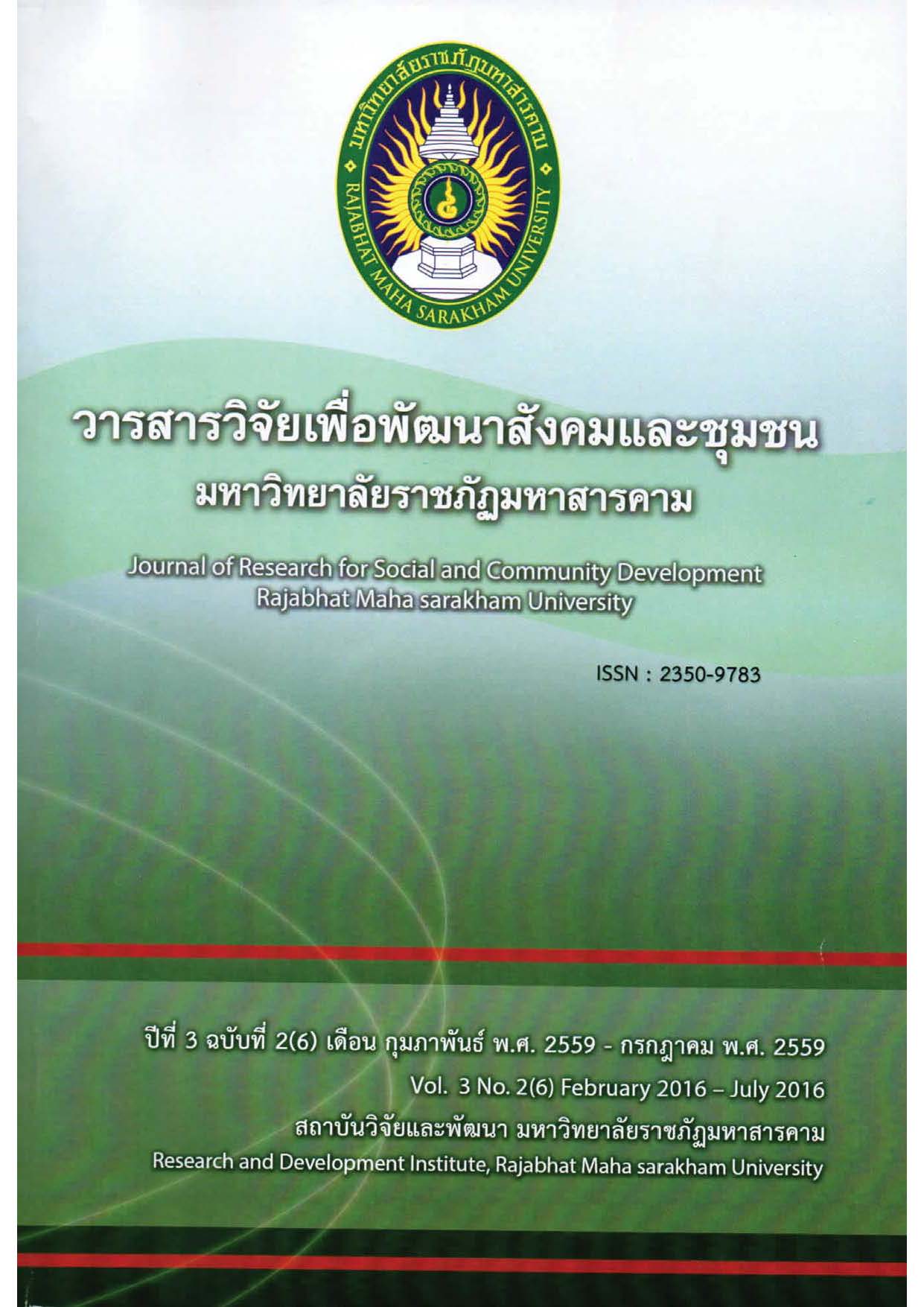Practicing Hatha Yoga with the Operational Effectiveness of the Training in Muang Maha Sarakham.
Keywords:
The Practice of Hatha Yoga, Work Efficiency of PractitionersAbstract
The purposes of this research were: The compare the performance of personal
factors in the performance of his practice. And the study of nature, practicing hatha yoga
practice in the performance of his practice. The sample used in this research. An employee
who has been practicing hatha yoga. Who practice hatha yoga regularly, at least once a week and practice for no less than 3 months 120 by calculating the sample using a formula based
on square blocks of Krejcie and Morgan have samples. 92 people conducted a survey
research. Using a questionnaire and personal factors (gender, age, marital status, years of
education), the nature of the practice hatha yoga. Operational and performance factors.
(Focus on work Skills and ability to work. Realization of their potential Satisfaction of the
completion of the work) statistics used for data analysis, the average standard deviation,
percent statistics used to test the difference T-test and F-test and Pearson correlation
coefficient. The results showed that: 1. The training practices in sex, age, education level,
marital status, age, work differently. Powerful Performance There is no difference, 2. practice
hatha yoga has a positive correlation with the performance of the operations of his practice.
The level of statistical significance. 01 The period of practice. There is a positive correlation
with the performance of the operations of his practice. The level of statistical significance. 01
The frequency of the practice. There is no positive correlation with the performance of the
operations of his practice
References
เปลี่ยนแปลงของภาวะความเครียดด้านร่างกายและจิตใจ. ภาควิชาพลศึกษาและสันทนาการ
คณะศึกษาศาสตร์มหาวิทยาลัยบูรพา.
วสี ศรีชลาคม. (2547). การศึกษาประสบการณ์ทางกายและจิตใจของผู้ฝึกปฏิบัติหะฐะโยคะ. วิทยานิพันธ
ศิลปศาสตร์มหาบัณฑิต สาขาวิชาจิตวิทยาการปรึกษา คณะจิตวิทยา บัณฑิตวิทยาลัย จุฬาลงกรณ์
มหาวิทยาลัย.
สถาบันโยคะวิชาการ. (2548). โยคะกับการพัฒนามนุษย์ . กรุงเทพฯ : มูลนิธิหมอชาวบ้าน.
เสวก ศรีไพโรจน์ . (2547). ปัจจัยที่มีผลต่อประสิทธิภาพในการปฏิบัติงาน : กรณีศึกษาพนักงาน บริษัทโอ
ซาก้าได้มอนด์อินดัสตรีส์ (ประเทศไทย) จำกัด. วิทยานิพันธรัฐประศาสนศาสตร์มหาบัณฑิต
สาขาวิชาการบริหารทั่วไป บัณฑิตวิทยาลัย มหาวิทยาลัยบูรพา.
เอนก ยุวจิตติ และสุนีย ยุวจิตติ. (2549). โยคะพิชิตโรค. พิมพ์ครั้งที่ 1. กรุงเทพฯ : สุขภาพใจบริษัท ตถาตา
พับลิเคชั่น.
Russell, Harriet. (2002). Getting Away Without Going Away : Yoga and Stress
Management.Available from : http://www.yogasite.com.
Herzog, H. E. (1991). Changed pattern of regional glucose metabolism during Yoga meditative
relaxation. Proquert-Dissertation Abstarcts Neuropsychobiology. 22(4) : 182-187.
Downloads
Published
How to Cite
Issue
Section
License
Articles that are published are copyrighted by the authors of the articles







